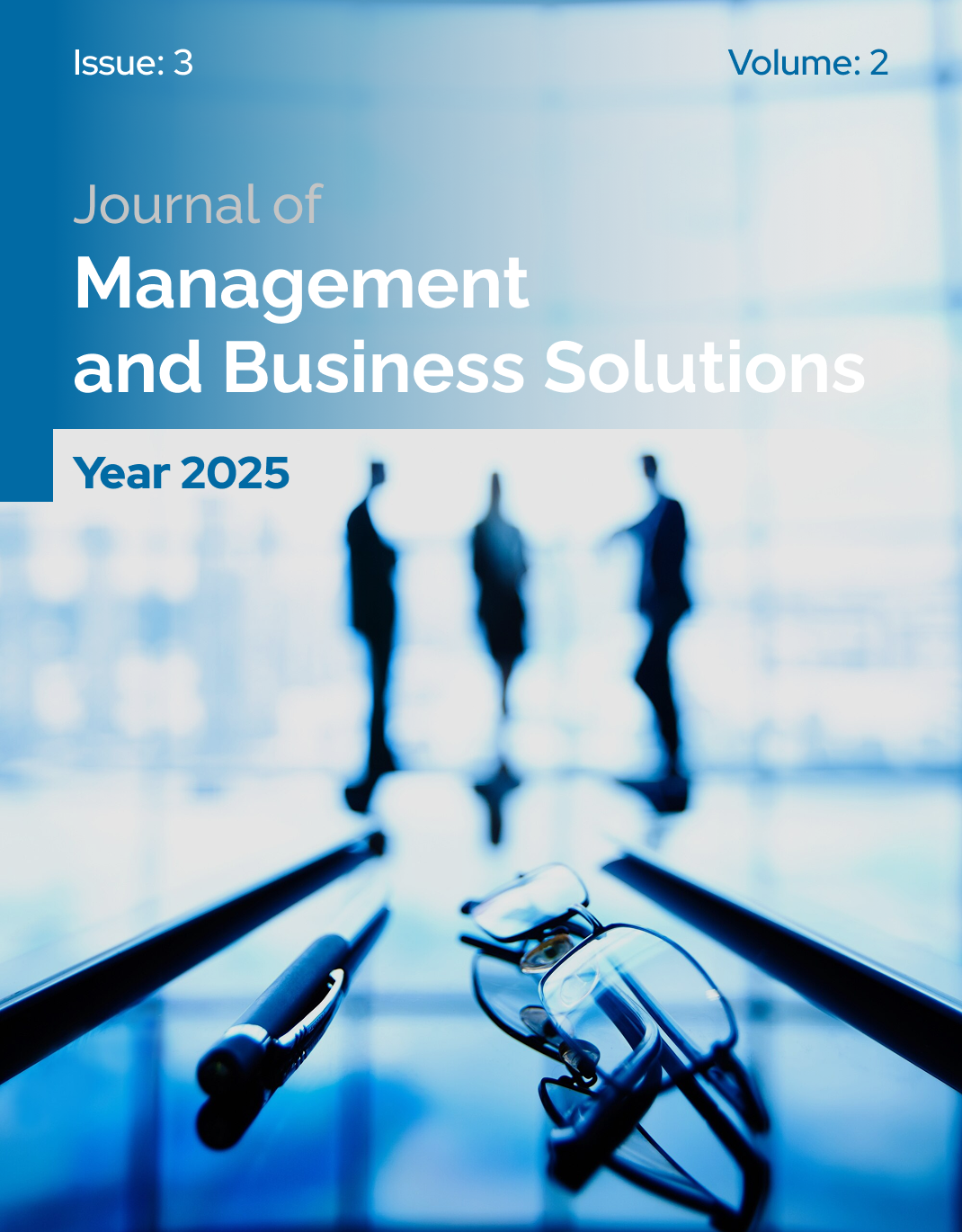Synthesis Research on Ethical Governance: Dimensions, Consequences, and Influencing Factors
Ethical governance is grounded in moral values. In today’s context—marked by rising corruption and declining public trust—identifying the consequences, influencing factors, and ethical dimensions of ethical governance has become an unavoidable necessity. The purpose of the present study is to identify the consequences, influencing factors, and ethical dimensions and components of ethical governance using a meta-synthesis approach. The research method in this study is qualitative, and through meta-synthesis, the researcher analyzes the results and findings of previous studies. By implementing the seven-step method proposed by Sandelowski and Barroso, the research process was completed. The software used in this study was SPSS 19. The findings indicate that ethical governance includes 82 components categorized into seven main dimensions: (1) ethical leadership and competence, (2) participation and social interaction, (3) justice and fairness, (4) responsibility and accountability, (5) institutional structure and rule of law, (6) human development and welfare, and (7) fundamental and moral values. In addition, 21 influencing factors on ethical governance were identified across five main categories: socio-cultural factors, leadership and managerial factors, political and governmental factors, structural and institutional factors, and innovative and technological factors. The consequences of ethical governance encompassed 19 factors, grouped into four dimensions: economic dynamism and growth, economic integrity and transparency, work ethic and service orientation, and sustainable development and societal resilience. This study presents a comprehensive model that maps the relationships among these dimensions and consequences, as well as the factors influencing ethical governance, thereby providing a framework for the establishment of ethical governance.
The Impact of Transformational Leadership on Auditors’ Job Stress with the Mediating Role of Emotional Intelligence
Transformational leadership, through inspiring and motivating employees and leveraging emotional intelligence to foster trust and empathy, creates a supportive work environment in which employees’ emotions are understood and valued. This, in turn, leads to reduced job stress. The primary aim of the present study is to investigate the effect of transformational leadership on auditors’ job stress with the mediating role of emotional intelligence in auditing firms in Iran. This study employed a descriptive-survey research design and is applied in terms of purpose. The statistical population consisted of managers of auditing firms who are members of the Iranian Association of Certified Public Accountants, as well as corporate managers, totaling 310 individuals. The sample size was determined using Cochran’s formula, indicating a minimum required sample of 173 participants. Given the possibility of non-response, 200 questionnaires were distributed, of which 174 fully completed questionnaires were returned and used in the final analysis. Data were collected using a questionnaire. Confirmatory factor analysis was applied to assess construct validity, and reliability was confirmed using Cronbach’s alpha coefficients. Data analysis was conducted using structural equation modeling in LISREL 8.8. The findings indicate that transformational leadership has a significant and inverse effect on auditors’ job stress through the mediating role of emotional intelligence in auditing firms in Iran. Additionally, transformational leadership and emotional intelligence also have significant and inverse direct effects on job stress. The effect of transformational leadership on emotional intelligence was found to be positive and significant. Managers of auditing firms in Iran are encouraged to adopt a transformational leadership style and enhance emotional intelligence to create conditions that help reduce auditors’ job stress.
Validation of the Service Innovation Model in the Agricultural Bank
This study was conducted with the aim of validating the service innovation model in the Agricultural Bank. In terms of purpose, the present research is applied; in terms of method, it is quantitative; and regarding the nature of the data, it is descriptive–survey. The statistical population consisted of all managers and employees of the Agricultural Bank in the northwestern provinces of the country (East Azerbaijan, West Azerbaijan, Ardabil, and Kurdistan), totaling 1,682 individuals. The sample size was estimated at 313 using Cochran’s formula, and the participants were selected through stratified random sampling. The data collection instrument was a researcher-made questionnaire. Research data were analyzed using structural equation modeling with PLS3 and SPSS software. The results indicate that, at a 99% confidence level, there is a positive and significant relationship among the antecedents, components, indicators, and outcomes of service innovation in the Agricultural Bank. Moreover, all indicators demonstrated high explanatory power, and the findings showed that antecedents of professional development, through their influence on developmental components, play a decisive role in shaping professional development outcomes for faculty members. These findings suggest that the proposed service innovation model in the Agricultural Bank possesses appropriate statistical and scientific validity and can be utilized as a practical framework for strategic decision-making by managers and policymakers.
Structural Modeling of Factors Influencing the Development of Personal Branding among Sports Coaches in Iraq
The purpose of this study was to examine the structural model of factors influencing the development of personal branding among sports coaches in Iraq. The research employed a descriptive–correlational methodology and was conducted using a survey design, with structural equation modeling applied to test the hypotheses. The statistical population consisted of professional sports coaches in Iraq. The sample for this study was selected through convenience sampling, and a total of 360 participants constituted the final sample. To measure the structural factors influencing the development of personal branding among Iraqi sports coaches, a researcher-made questionnaire—designed based on interviews with experts—was utilized. Data analysis was conducted through structural equation modeling. The results indicated that variables such as environmental factors (political–economic conditions), expertise, coaching performance and skills, coaching experience, lifestyle outside the sports field, promotion, the coach’s behavioral approach, and the coach’s personality significantly influence the development of personal branding among sports coaches in Iraq. The development of a structural model of factors affecting the formation of personal branding among Iraqi sports coaches contributes to a deeper understanding of key determinants and provides precise guidance for enhancing coaches’ professional standing. Moreover, this model facilitates the design of targeted strategies to improve the image and increase the influence of coaches within the sport domain.
Startup Visa and the Iranian Entrepreneurial Ecosystem: How Can Entrepreneurial Outflow Be Prevented?
The objective of this study was to design a model for preventing the outflow of entrepreneurs through startup visas from the Iranian entrepreneurial ecosystem. This research was conducted using an exploratory sequential mixed-methods strategy in two qualitative and quantitative phases to identify the dimensions and components influencing this phenomenon and to develop the proposed model. In the qualitative phase, employing an interpretive paradigm and thematic analysis, semi-structured interviews were conducted with 10 experts (5 individuals holding a startup visa and 5 university faculty members). The qualitative statistical population consisted of entrepreneurs, ideators, startup visa holders, and scholars specializing in this field, selected through snowball sampling until theoretical saturation was reached. In the quantitative phase, a researcher-made questionnaire using a five-point Likert scale was distributed among 384 entrepreneurs, startup managers, and knowledge-based companies supported by the Science and Technology Park. Data analysis was performed using SMARTPLS and ISM software. The findings indicated that infrastructural deficiencies (35% of responses), lack of effective financial support (28% of responses), and legal and bureaucratic barriers (22% of responses) were the most significant reasons for entrepreneurs’ inclination toward migration. Moreover, weaknesses in professional networking (12%) and the absence of targeted educational programs (3%) were identified as complementary factors. In the quantitative phase, the proposed model—comprising six dimensions of financial support, technological infrastructure, policymaking, education, networking, and entrepreneurial culture—was confirmed. The results suggest that designing an effective model to prevent entrepreneurial outflow requires strengthening technological infrastructure, improving financial support mechanisms, and reforming bureaucratic policies.
Achieving Expert Consensus on the Model of Political Behavior in Governmental Organizations: A Validation Study Using the Delphi Method
Political behavior in governmental organizations refers to a set of informal actions and interactions undertaken by employees and managers—beyond their formal job descriptions—to acquire, maintain, and increase influence, power, and scarce resources. The primary objective of the present study is to achieve expert consensus on the model of political behavior in governmental organizations through a validation study based on the Delphi method. This research is developmental in terms of purpose and employs a qualitative–quantitative Delphi methodology. To realize the objective—namely, achieving expert consensus on the model of political behavior in governmental organizations—the Delphi technique was used. In this study, the model of political behavior in governmental organizations, derived from the research of Tir et al. (2026), was validated using the Delphi method. The statistical population in this phase consisted of experts in public administration and political science who hold academic ranks of associate professor or higher, have conducted studies in the areas of politics, political behavior, and organizational leadership, possess scholarly contributions in these fields, and have managerial or executive experience at senior levels within the public or governmental sector. The sampling method used at this stage was snowball sampling, and the sample size consisted of 15 experts. The statistical software used in the study was SPSS 19. The findings revealed that political behavior in governmental organizations includes three categories: black political behavior comprising 33 components, white political behavior comprising 37 components, and gray political behavior comprising 20 components. Understanding political behavior enables managers to predict and manage such behaviors rather than directly confronting or attempting to eliminate them—an approach that is often impractical.
Forecasting Oil Market Volatility Using Machine Learning Models
Forecasting oil market volatility is one of the major challenges in the global economy and financial markets, exerting broad impacts on the economic and strategic decisions of oil-producing and oil-consuming countries. This study was conducted with the aim of evaluating and forecasting oil market volatility using advanced machine learning models and analyzing the factors that influence fluctuations in oil prices. To this end, daily time-series data from macroeconomic and financial indicators—including the S&P 500 Index, the Dow Jones Index, the VIX Index, changes in unemployment claims (ICSA), and the interest rate (DGS10)—were collected and analyzed for the period from 2014 to 2024. In this research, heteroskedasticity models (GARCH and TGARCH) were first employed to extract conditional variance as a metric for volatility, and then these variables were used as inputs for machine learning models such as neural networks and random forests. The results indicated that machine learning models—especially threshold GARCH models with skewed Student-t and Johnson SU distributions—are capable of providing more accurate forecasts of oil market volatility. Moreover, variables such as stock market index volatility and the VIX Index have a positive and significant effect on oil market volatility. These findings demonstrate the effectiveness of machine learning models in analyzing the complex and nonlinear fluctuations of the oil market. The study suggests that, for improved oil market risk management, the use of machine learning models should receive greater attention, particularly during periods of market distress.
Threshold Effects of Banking Risk Management on the Cost of Capital in Banks Listed on the Tehran Stock Exchange with an Emphasis on the Competitiveness Index
The present study examines the threshold effects of external debt on sustainable economic growth while taking into account the heterogeneity in regulatory quality and government institutional quality. Using a Panel Smooth Transition Regression (PSTR) model in which external debt is considered the transition variable, the sustainable development function is modeled. Following confirmation of the nonlinear model, the results of the nonlinear section are analyzed. According to the estimated nonlinear model, the coefficient of external debt (ED) is 0.49, indicating a negative effect of external debt on sustainable development in the selected countries. Given the corresponding probability value of this coefficient (0.0069), which is less than 0.05, this effect is statistically significant at the 95% confidence level. Furthermore, the coefficients and computed probability values for institutional quality, regulatory quality, and rule of law are 0.016, 0.089, and 0.235, with corresponding probability values of 0.0355, 0.0015, and 0.0053, respectively. These results indicate that the effects of regulatory quality, institutional quality, and the rule of law on improving sustainable development are positive and statistically significant.
About the Journal
The Journal of Management and Business Solutions (JMBS) is a peer-reviewed, open access academic journal committed to the advancement and dissemination of knowledge in the fields of management, business, and organizational studies. Published on a quarterly basis, JMBS serves as a multidisciplinary platform for academic researchers, industry professionals, policy-makers, and graduate students to explore current trends, theoretical insights, empirical findings, and innovative methodologies in the dynamic world of business and management.
With a strong emphasis on scholarly rigor and relevance to practice, JMBS aims to bridge the gap between theory and implementation, offering cutting-edge research that addresses complex challenges in areas such as strategic management, leadership, entrepreneurship, innovation, corporate governance, digital transformation, financial management, human resource development, marketing, operations, and organizational behavior.
The journal maintains a double-blind peer review process to ensure the integrity, quality, and objectivity of published content. Each submitted manuscript is evaluated by two or three anonymous reviewers with relevant subject matter expertise, supported by a diverse editorial board of seasoned scholars and industry experts.
JMBS welcomes contributions from global scholars and encourages submissions that reflect a variety of perspectives, cultures, and methodological approaches. The journal is committed to publishing original articles, theoretical papers, empirical studies, review articles, and case analyses that contribute to the theoretical foundations, practical applications, and policy implications in the fields of business and management.
Current Issue

Articles
-
Exploring the Dimensions of Employee Engagement in Remote Work Settings: A Qualitative Investigation of Technology Firms
Mitra Dadvar ; Hossein Tabandeh * -
Uncovering the Dimensions of Organizational Agility in Crisis Contexts: A Grounded Theory Study of Logistics Firms
Samaneh Kheirandish ; Behnam Rostami * -
Identifying the Causes of Knowledge Hoarding in Professional Service Firms: A Phenomenological Approach
Zohreh Malekzadeh ; Ali Khosravani * -
Exploring Strategic Human Resource Practices That Promote Psychological Safety in Diverse Workforces
Hanieh Bahmani ; Mohammad Reza Dehghani * ; Yasaman Eskandari















